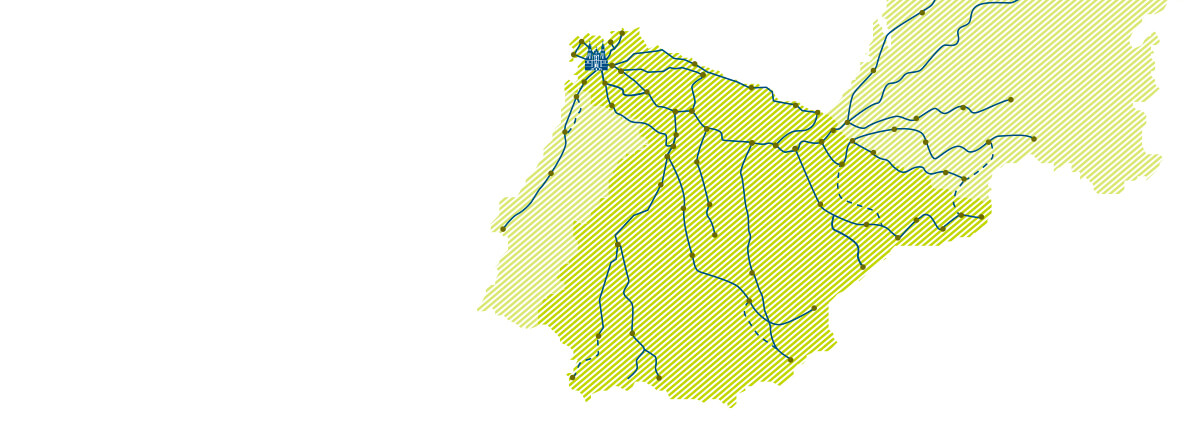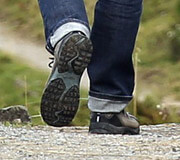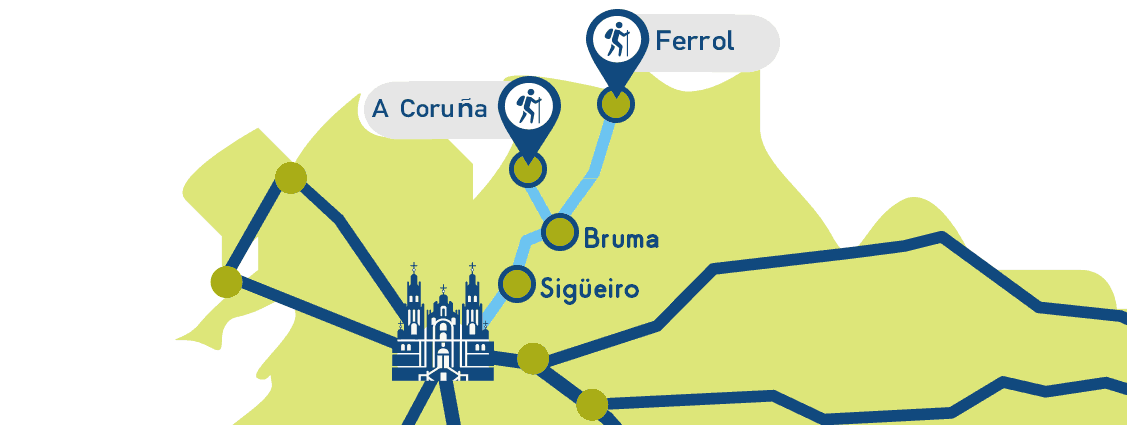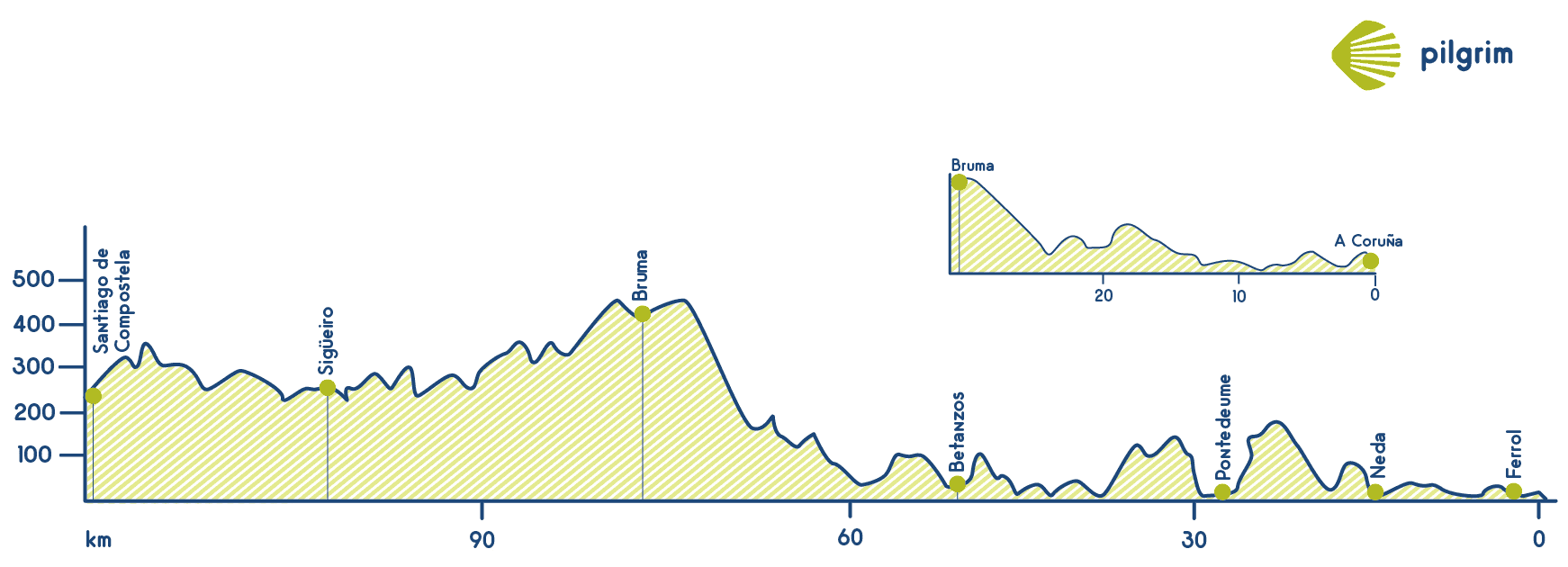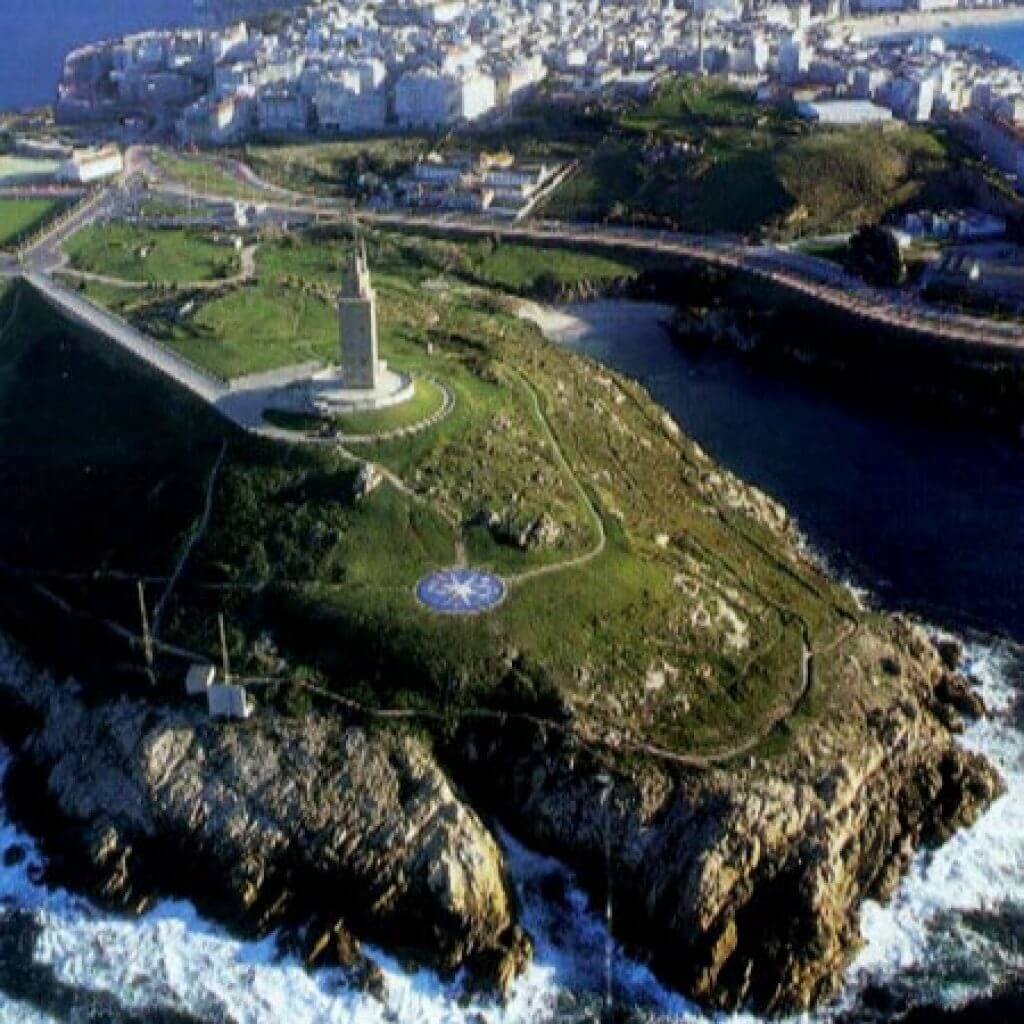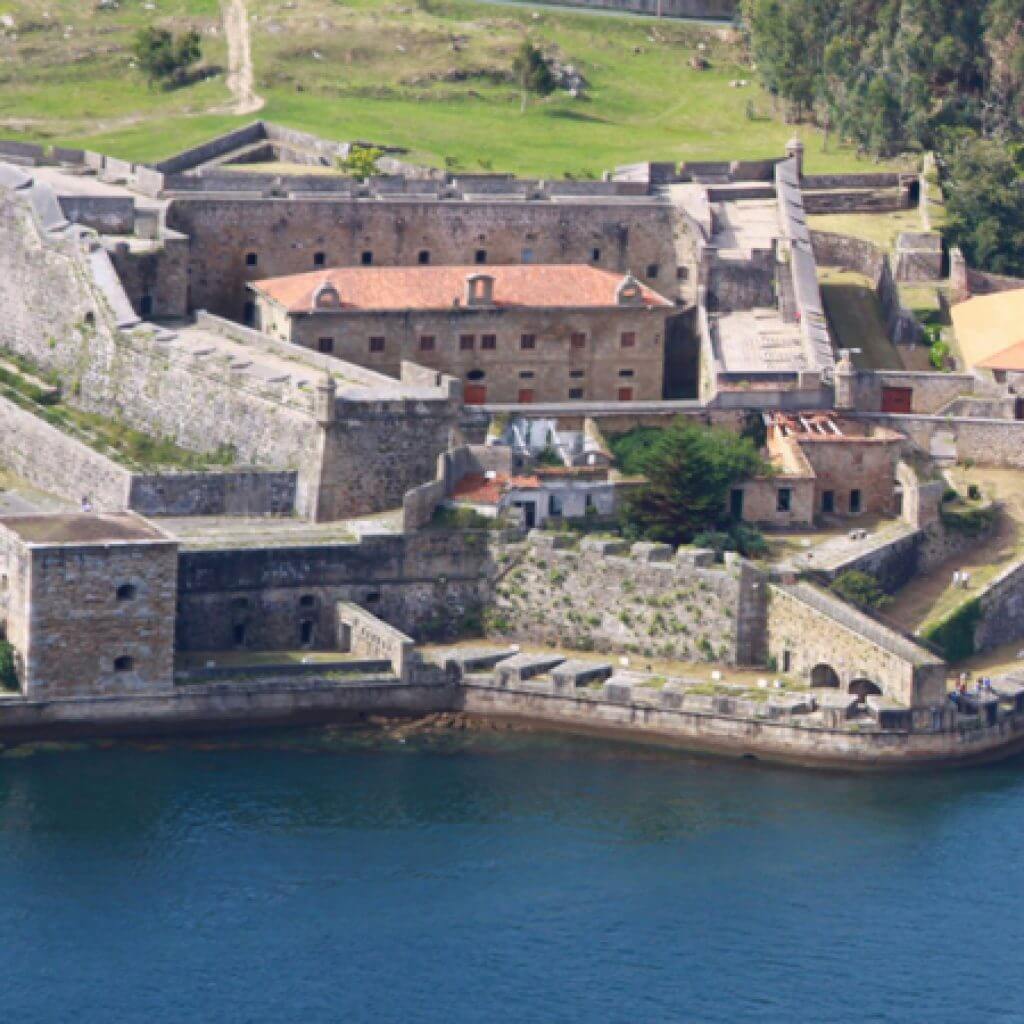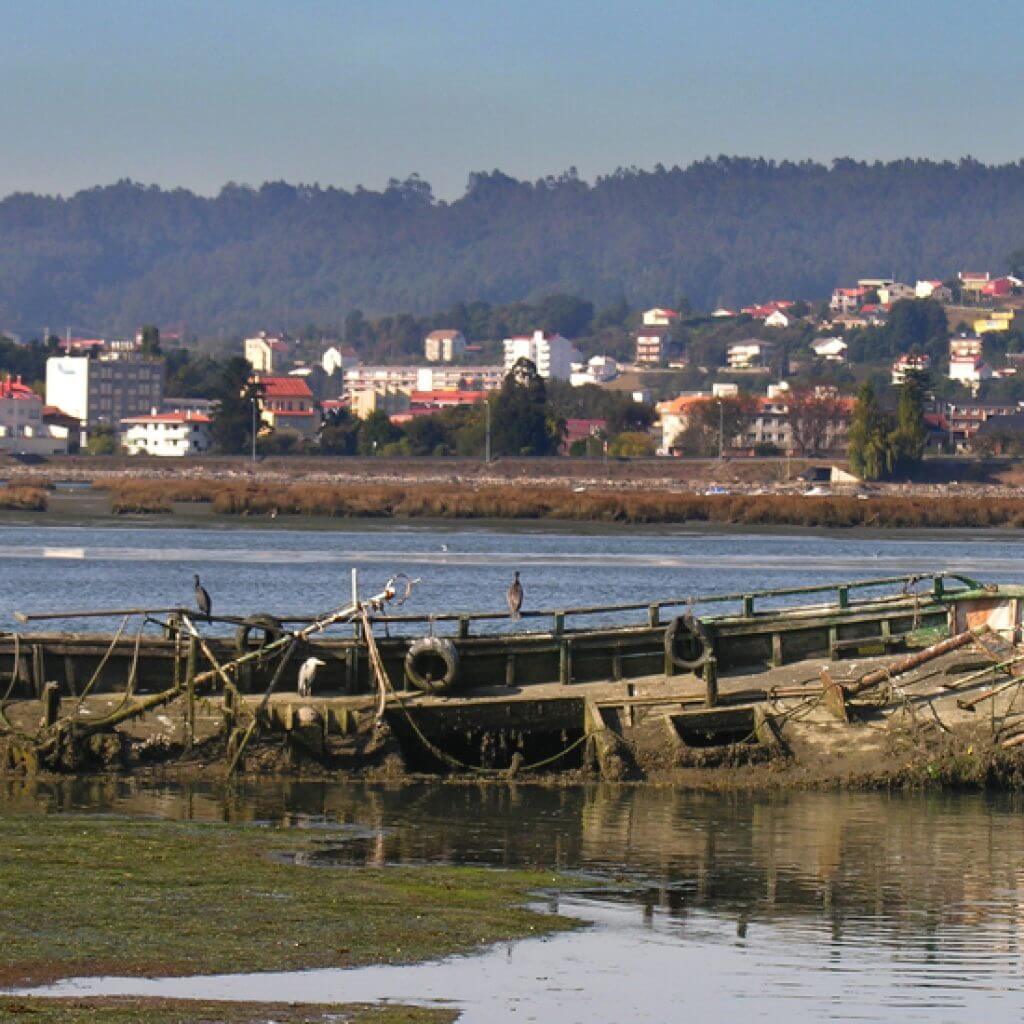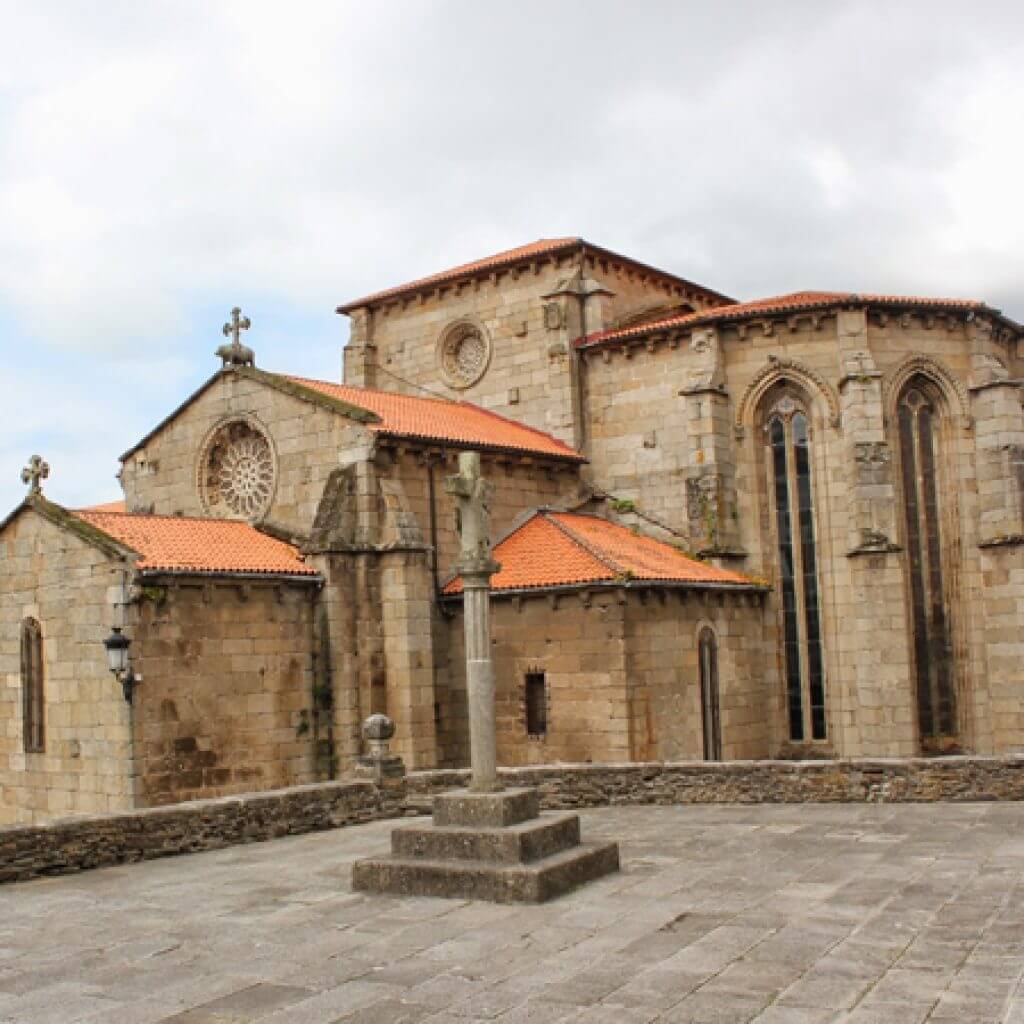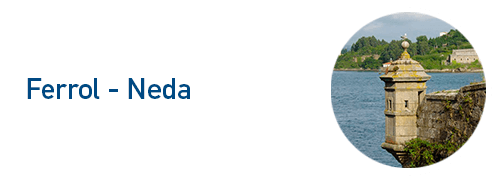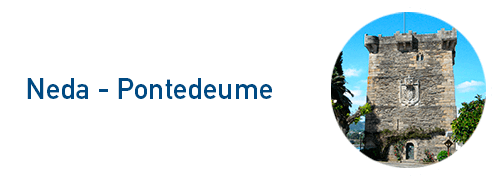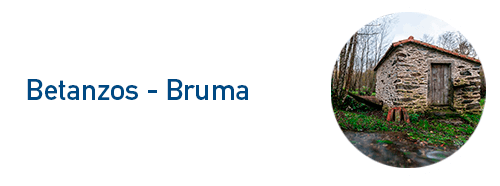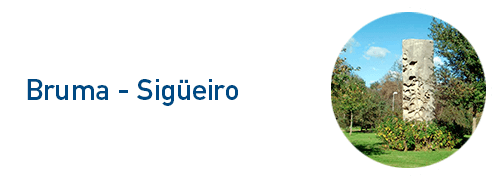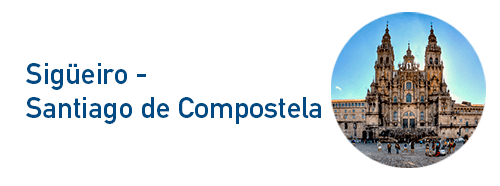There are just 5 pilgrim hostels (“albergues”) in summer, so you must book ahead, or choose a private accommodation. There are plenty of small lovely villas on the way to enjoy the northern gastronomy and fresh seafood. We recommend you also walk the 35 kilometers (21.7 miles) between A Coruña and the point where both ways get unified. You can find lovely villages such as Bruma(better known as Hospital de Bruma because of the old pilgrims’ hospital that used to be in that village), located in Mesía.
History
The English way or “Camino Inglés” started in the Medieval Ages because of the strategic position of Ferrol and A Coruña, main ports to enter Galicia from Northern Europeans, such as English, Scottish, Irish and Scandinavians who came to Spain to buy and sell goods. The name of the English Way comes from the route that British sailors used to do, crossing the sea full of merchandise to sell and visit the famous Christian sanctuaries. They arrive at these two main ports and then they used to walk to go to different Galician cities and villages; Santiago was not their main objective. But in the mid-14 century, taking advantage of the commercial flows of that time, pilgrimage started to be more and more popular among sailors, they wanted to get to know some of our Christian sanctuaries. When they arrived at Galicia the route became calm and safe and they could easily reach Santiago de Compostela in about a few days. This fact was an advantage in regard to the time that took go through the French Way. Crossing the Pyrenees took them a lot of time because of the thieves that used to be in this route.
About the “Camino Inglés” Route
El “Camino Inglés” allows you to choose two starting points: either the city of A Coruña or Ferrol. The only difference is the number of stretches: 5 for Coruña, 3 for Ferrol. The last two stretches are the same for both itineraries. If you want the accreditation, you need to start in Ferrol, as it’s necessary to walk more than 100 km (62 miles) to get it. From Ferrol to Santiago there are 120 kilometers (74.5 miles) full of history and heritage where green is the main color of all stretches.
The English used their main ports to board for Galicia: Bristol, Newcastle, London or Southampton were the main emitters of England; and Galway or Dublin the main emitters of Ireland. Pilgrims used to choose the English Way after reaching Galicia because they stay in monasteries and hospitals.
We actually know about some Crusaders and Templar pilgrims from the 11 century that used to go to Jerusalem who during their stopover in A Coruña used to walk to Santiago to ask St James for protection in the Holy Land. This fact became so popular that knights from all over Europe stopped in Galicia to go and visit Santiago. Calm is always with us along this way because it is not as crowded as the other ways.
Stages of The Camino Inglés
| Stage |
Path |
Km |
Info |
| Stage 1 |
Ferrol – Neda |
15 |
|
| Stage 1B |
A Coruña – Bruma |
33,6 |
|
| Stage 2 |
Neda – Pontedeume |
16 |
|
| Stage 3 |
Pontedeume – Betanzos |
20,2 |
|
| Stage 4 |
Betanzos – Bruma |
27,8 |
|
| Stage 5 |
Bruma – Sigüeiro |
24 |
|
| Stage 6 |
Sigüeiro – Santiago de Compostela |
16,7 |
|
